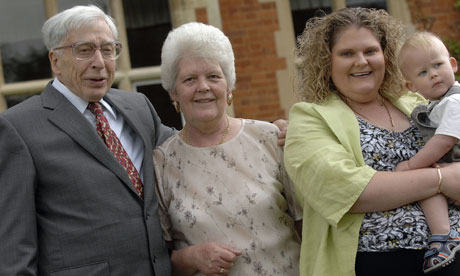
About 3 million IVF babies have been born since Louise Brown's birth in 1978. Bizarrely, when this life-giving treatment was first considered, it was massively controversial. A storm of vitriolic protest came from many religious leaders, journalists, politicians, regrettably even other scientists and doctors.
Doctors Patrick Steptoe and Robert Edwards, and our colleagues in Australia, Alan Trounson and Alex Lopata, had worked for years trying to achieve a successful pregnancy. They believed in the plight of women desperate to have a family.
What is often forgotten is the immense fortitude of the women who underwent this complex treatment, with repeated failure and agonising heartbreak. They too had extraordinary faith, suffering pain, repeated surgery, and the dreaded return of the next menstrual period when treatment was unsuccessful. Lesley, Louise's mother, who sadly died this week, was the first to have a successful live birth eventually and she was indomitable in persisting with a "hopeless" treatment.
She was also immensely grateful to Steptoe for continuing to consider it, even when every option seemed pointless.
One reason why Lesley and other women were particularly courageous was because many experts argued that any baby born after IVF would be highly abnormal or die, as a result of this unproved experiment. It required resolve and considerable trust in Steptoe to face the prospect of a miscarried, deformed foetus, and worse to consider that an IVF baby might live briefly with some painful handicap.
I remember some years later, when Alan Handyside and I used IVF to remove a cell from an embryo to make the first genetic diagnosis. Our patients had all lost a baby with a horrible genetic disorder after normal conception. They felt strongly that if we could screen their embryos to avoid this, it was far more acceptable than aborting a fetus with a fatal defect.
Their bravery and moral courage, like that of Lesley Brown, was inspirational. When the news came that our first genetic patient was pregnant, I rushed into Handyside's office – and we sat in complete silence for 15 minutes while we considered what our brave patient had done. We were close to tears, not because we had achieved some scientific breakthrough but because at that moment we recognised the bravery of our patient who trusted us. I bet Steptoe felt the same way when Lesley Brown's pregnancy test came back positive.
• Follow Comment is free on Twitter @commentisfree

